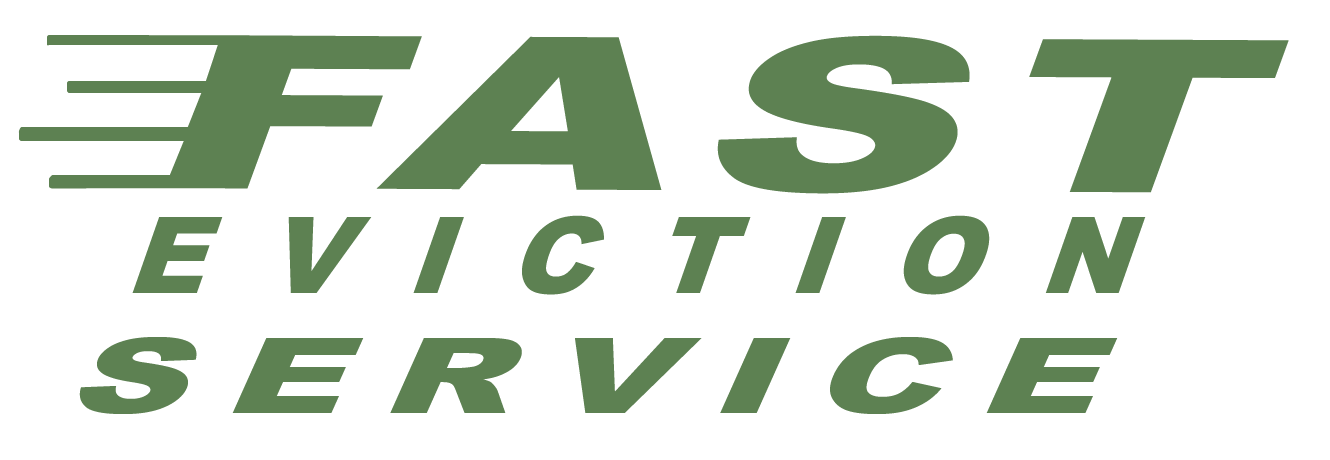You are represented at all times by one of our California Eviction Attorneys | 1-800-686-8686 | intake@fastevict.com | Se habla español
How California’s New Commercial Debt Collection Law Will Impact Lenders in 2025
Updated 03/26/25
California has always been known for leading the way when it comes to regulatory changes, and 2025 will be no different. With the introduction of Senate Bill 1286 (SB 1286), a major shift is coming for lenders who handle commercial debts in the Golden State. Whether you’re a seasoned commercial financing provider or a lender based out of state with California clients, this law could affect how you conduct business. Understanding how these commercial debt collection laws in California will evolve is crucial for staying compliant and protecting your investments.

This article breaks down everything lenders and collectors need to know about SB 1286 California, its connection to the Rosenthal Act, and how the law will affect commercial mortgages, leases, and even guarantors. The July 1, 2025, debt law changes are not something to take lightly. As we approach the implementation date, now is the time to get familiar with the new requirements.
Table of Contents
- What Is California Senate Bill 1286 (SB 1286)?
- When Does the Collection Law Take Effect?
- Who Is Affected by the New Collection Rules?
- Understanding “Covered Commercial Debt” Under SB 1286
- How the Rosenthal Act Applies to Commercial Debt Collection
- Exemptions: When the Collection Law Does Not Apply
- Licensing Requirements for Commercial Collectors
- Impact on Commercial Mortgages and Leasing Agreements
- Does This Apply to Out-of-State Lenders and Guarantors?
- Steps Lenders Should Take Before July 1, 2025
- Frequently Asked Questions
What Is California Senate Bill 1286 (SB 1286)?
Senate Bill 1286, often referred to as SB 1286 California, is a piece of legislation signed into law to extend consumer-like protections to certain types of commercial debt collections. In the past, commercial debt collection operated with fewer restrictions than consumer debt, giving lenders and collectors more freedom. However, with complaints about aggressive or misleading collection tactics in commercial settings, lawmakers saw the need for stronger oversight.
SB 1286 expands upon the Rosenthal Fair Debt Collection Practices Act by creating new rules for “covered commercial debts.” These rules aim to improve transparency, accountability, and fairness for business owners who might be taken advantage of during collection efforts. The law updates the California Finance Code Section 22800 and applies a range of compliance duties previously reserved for consumer debts to some commercial obligations as well.
When Does the Collection Law Take Effect?
The official rollout date for SB 1286 is July 1, 2025. This means that lenders, debt collectors, and legal counsel have until that date to adjust their internal practices and prepare for enforcement. As with many regulatory deadlines, waiting until the last minute can create compliance risks and legal headaches.
Understanding and planning for these July 1, 2025, debt law changes now can save commercial financing providers from fines, lawsuits, and licensing issues. It’s not just about meeting the letter of the law but understanding its spirit. Commercial debt collection laws in California are tightening to protect smaller businesses and entrepreneurs.
Who Is Affected by the New Collection Rules?
SB 1286 affects any person or company involved in collecting covered commercial debt California has defined. That includes original creditors, third-party collection agencies, attorneys, and even some landlords who lease commercial property.
If you’re trying to recover a past-due balance from a business or an individual who signed a commercial lease or loan agreement, and that debt meets the new definition of “covered,” then you’re subject to the new rules. Commercial financing provider regulations are no longer just a back-office issue; they’re now front and center for operations.
Moreover, the law does not only target traditional financial institutions. Any business engaged in the collection of commercial debt, including real estate investors and legal professionals, must comply. These changes will be particularly important for small-scale lenders who may not have previously seen themselves as subject to California collection law 2025.
Understanding “Covered Commercial Debt” Under SB 1286
The heart of SB 1286 lies in the term “covered commercial debt.” While the law does not cover all business debts, it specifically targets commercial obligations incurred by an individual or business primarily for business purposes but under a certain threshold. In many cases, this will apply to sole proprietors, small partnerships, and freelancers who use credit for business-related expenses.
For example, if someone took out a loan under $50,000 to buy equipment for a cleaning business, and then defaults, that might qualify as covered commercial debt California law now regulates. The same might apply to a lease agreement for a small shop if it includes personal guarantees.
The goal is to ensure fairness in debt collection, especially for smaller operations that might not have the same legal sophistication as large corporations. Commercial debt collection laws California is adopting are meant to close the gap between consumer and business protections.
How the Rosenthal Act Applies to Commercial Debt Collection
The Rosenthal Act is California’s version of the federal Fair Debt Collection Practices Act (FDCPA), but it traditionally applied to consumer debts. SB 1286 borrows from the Rosenthal Act’s principles and extends them to certain commercial debts.
Under the new framework, debt collectors must avoid misleading statements, excessive contact, and abusive practices when collecting on covered commercial debts. In other words, Rosenthal Act commercial debt protections will now overlap with the business world.
Collectors will be required to send validation notices, honor cease communication requests, and refrain from publicizing debt in harmful ways. If you’ve been operating under the assumption that commercial collections were the Wild West, SB 1286 will be your wake-up call.
Exemptions: When the Collection Law Does Not Apply
Not all commercial debts are covered by SB 1286. The law specifically exempts debts over a certain dollar amount and those tied to sophisticated commercial transactions. This includes large business-to-business contracts and high-value commercial leases. Also, creditors collecting their own debts under their legal name are sometimes exempt.
Another key exemption applies to certain institutional lenders or commercial entities that have internal policies aligned with existing federal regulations. However, this does not automatically mean you’re off the hook. Understanding where you stand in relation to the new California debt collection compliance rules is essential.
SB 1286 does not eliminate all risks. Even exempt creditors could face legal scrutiny if their practices are seen as deceptive or abusive. It’s better to err on the side of caution than assume exemption provides total protection.
Licensing Requirements for Commercial Collectors
One of the biggest changes under California Collection Law 2025 is the licensing requirement for anyone collecting covered commercial debt. This includes out-of-state collectors operating in California.
Previously, commercial collectors often bypassed licensing requirements by virtue of not collecting consumer debts. SB 1286 closes that gap. Now, any party involved in covered commercial collections must register with the California Department of Financial Protection and Innovation (DFPI).
You will need to show proof of financial responsibility, demonstrate knowledge of California debt collection compliance, and maintain records. Collectors must also keep up with continuing education and renew their licenses annually.
Impact on Commercial Mortgages and Leasing Agreements
Landlords, brace yourselves. SB 1286 might apply to certain commercial leases and even commercial mortgages, depending on how they’re structured. If the debt involves a personal guarantor or falls below the defined threshold, it could be considered covered.
This is especially true for small business tenants who signed personally for lease obligations. The line between commercial and consumer obligations can get blurry, and that’s where this law steps in. Commercial leases debt collection law now must factor in whether the tenant’s business size, structure, and use of credit make the debt subject to new protections.
As a result, landlords may need to revise their leasing agreements, communication procedures, and even hire licensed collectors for recovery actions. Simply sending a demand letter could trigger obligations under the Rosenthal Act commercial debt standards.
Does This Apply to Out-of-State Lenders and Guarantors?
Yes, and this is where many lenders are likely to get tripped up. Even if your business is located outside of California, if you collect from a debtor inside California, or enforce a guarantee that connects to a covered commercial debt, you must comply with SB 1286.
Debt collection rules for guarantors are shifting. If your loan documents include personal guarantees, you could find yourself under California’s jurisdiction even if the main debtor is a business entity. This broad reach is intentional and reflects California’s interest in protecting residents and small businesses.
Out-of-state lenders should not underestimate this law’s impact. It is wise to consult with California-based counsel and adjust your operations before July 1, 2025. Waiting until a court forces your hand could be very expensive.
Steps Lenders Should Take Before July 1, 2025
The July 1, 2025, debt law changes are closer than they appear. The best thing you can do right now is to audit your current debt collection practices. Review every account that could fall under the “covered commercial debt” umbrella. Evaluate your communication scripts, contracts, and training materials.
Next, consult with legal experts on SB 1286 California to determine your obligations. You may need to apply for a license with the DFPI and adjust your debt collection timelines, particularly if you use third-party agencies.
Educating your staff on the intersection of commercial debt collection laws California and the Rosenthal Act will ensure you avoid lawsuits and fines. Lastly, don’t wait until June 2025 to make changes. The earlier you act, the better positioned you’ll be.
Frequently Asked Questions
What are commercial debt collection laws California is changing in 2025?
California is expanding protections to certain types of commercial debts through SB 1286. The new rules mirror some consumer protections under the Rosenthal Act and require licensing for collectors.
Does SB 1286 apply to all business debts?
No, only “covered commercial debts” are included. These typically involve smaller obligations, personal guarantees, or individual borrowers acting for business purposes.
Do out-of-state lenders have to comply?
Yes. If you collect from California residents or enforce guarantees on qualifying debts, you must follow SB 1286.
Will this affect commercial leases?
Possibly. If the lease includes a personal guarantor or fits the criteria for a covered commercial debt, it may be subject to the new rules.
Where can I apply for a debt collection license in California?
Licensing is handled by the California Department of Financial Protection and Innovation (DFPI).


